Diamond Pedals is officially back with five compact new stompboxes featuring original circuits, and updated classics
The much-loved Canadian brand returns with the Memory Lane delay, Diamond Drive, Tremolo, and the legendary tone-sweetening Comp/EQ for guitar and bass
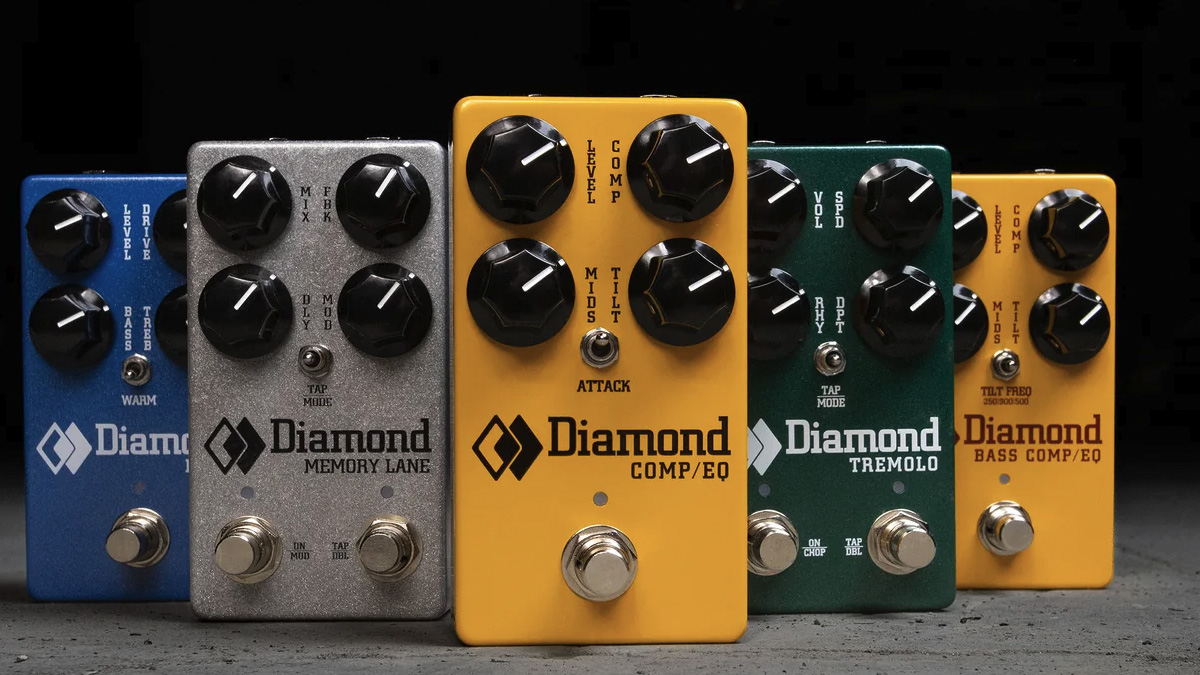
Diamond Pedals is back on the pedalboard menu, as the much-loved Canadian brand is set to return after SolidGoldFX stepped in and bought the company in December last year.
Built in the SGFX facility in Montreal, but retaining its independence, Diamond Pedals announced its return with a handful of thoughtfully-designed stompboxes, with some classic original circuits augmented by some welcome new features, and compact enclosures with space-saving top-mounted jacks all round.
The new range comprises the Diamond Drive overdrive pedal and Memory Lane analog-style delay pedal, with utilitarian designations for Tremolo, Comp/EQ, and Bass Comp/EQ.
Some players would have had their own nicknames for the latter two pedals. For many players, be it for electric guitar or bass guitar, a Diamond Compressor pedal was the secret weapon in their sound, the sort of always-on tone-sweetener you might happily glue to your ‘board.
These 2023 editions retain much of the originals' circuit architecture but, as the name suggests, there is a newly designed EQ section from which Diamond promises increased range and functionality.
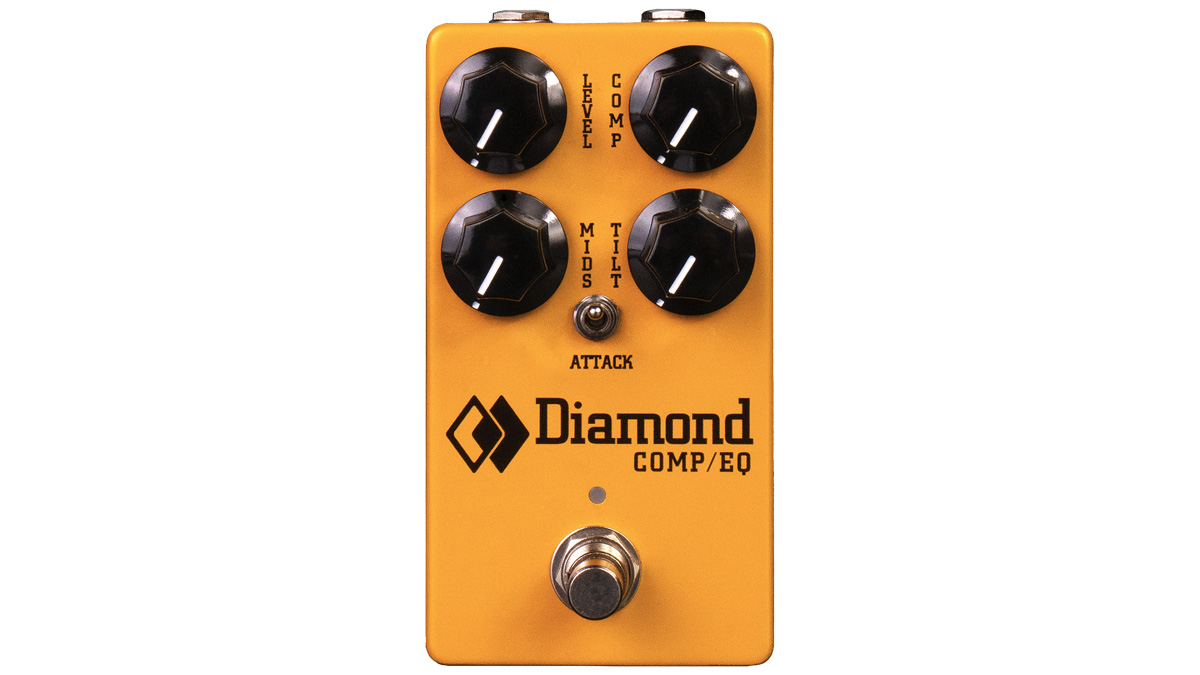
The Comp/EQ for guitar has been souped-up with a new Mids dial control that boosts or cuts to taste, and a “hi-fi inspired, center-detent active tilt EQ."
It also has an Attack switch for toggling between “signature ultra-snappy Diamond comp style” to a more transparent and soft style of compression, a Level knob for setting output volume, and a Comp knob that controls how much squash you want.
Get The Pick Newsletter
All the latest guitar news, interviews, lessons, reviews, deals and more, direct to your inbox!
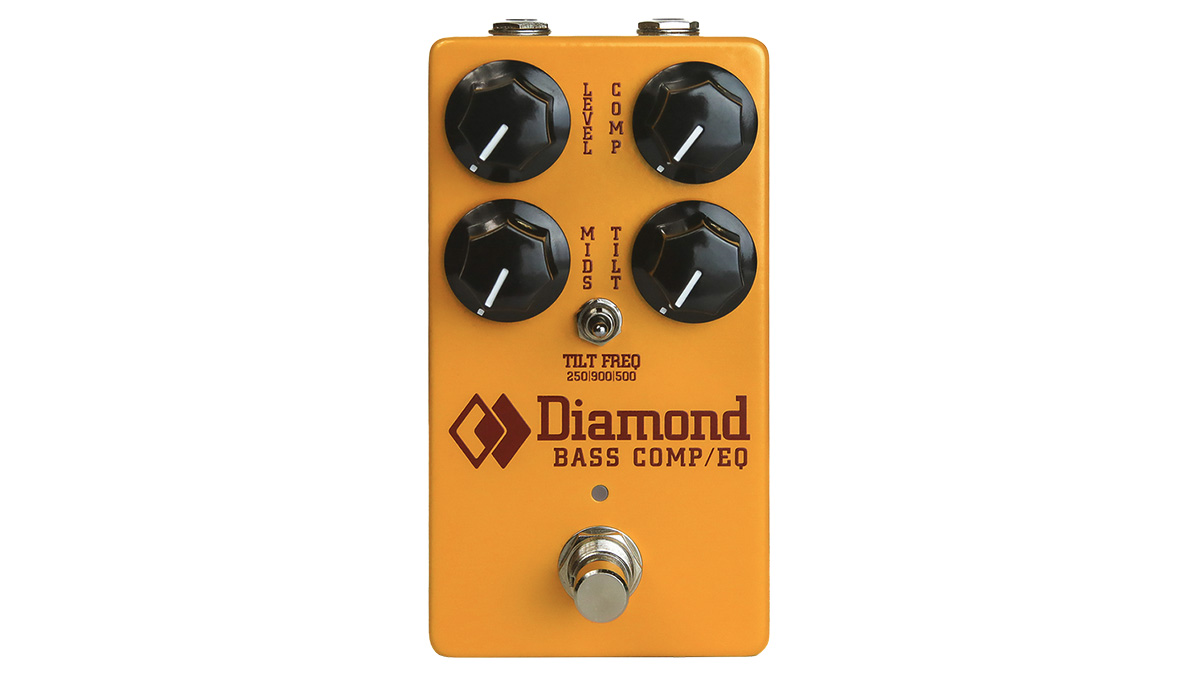
The Bass Comp/EQ looks much the same but different. This has a three-way Tilt switch that allows players to set the Tilt fulcrum frequency to 250, 500 or 900Hz, with the accompanying dial allowing you to boost or cut it by 6dB.
The Mids knob, meanwhile, has a center frequency of 800Hz that can be boost or cut by 10dB. Set it at noon for a flat response. Level and Comp knobs round out your controls.
Next up, the Diamond Drive. The Diamond Drive is an all-new design that draws inspiration from the brand’s Blaze, J-Drive and Fireburst pedals and is created to be an all-occasions drive pedal, capable of adding a clean boost, a gentle overdrive, or – should you wish to dime it and pair it with humbucker-equipped guitar – it can operate as a distortion.
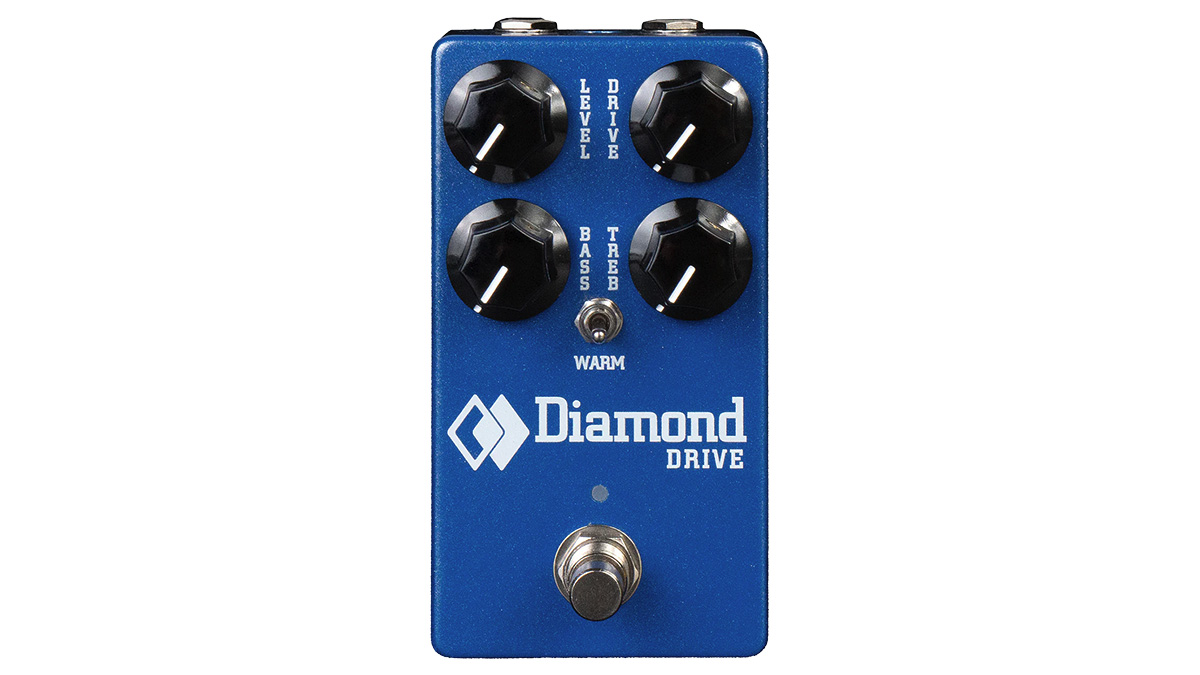
It has a straightforward but powerful control setup, with dials for Level and a dual-band active Baxandall EQ accessed via Bass and Treble dials, plus a Warm switch that toggles a 1kHz high-shelf filter that can take the edge off your tone.
Say your Telecaster’s bridge pickup is drilling teeth in the front few rows, this Warm setting might just smooth things out.
We have seen the Memory Lane in a variety of enclosures over the years – just see the pic below – but this is hands down the most compact. It is an analog-style delay but there is some digital magic under the hood that allows it to double its delay times, extend its frequency response, draw less current and make less noise. All good things.
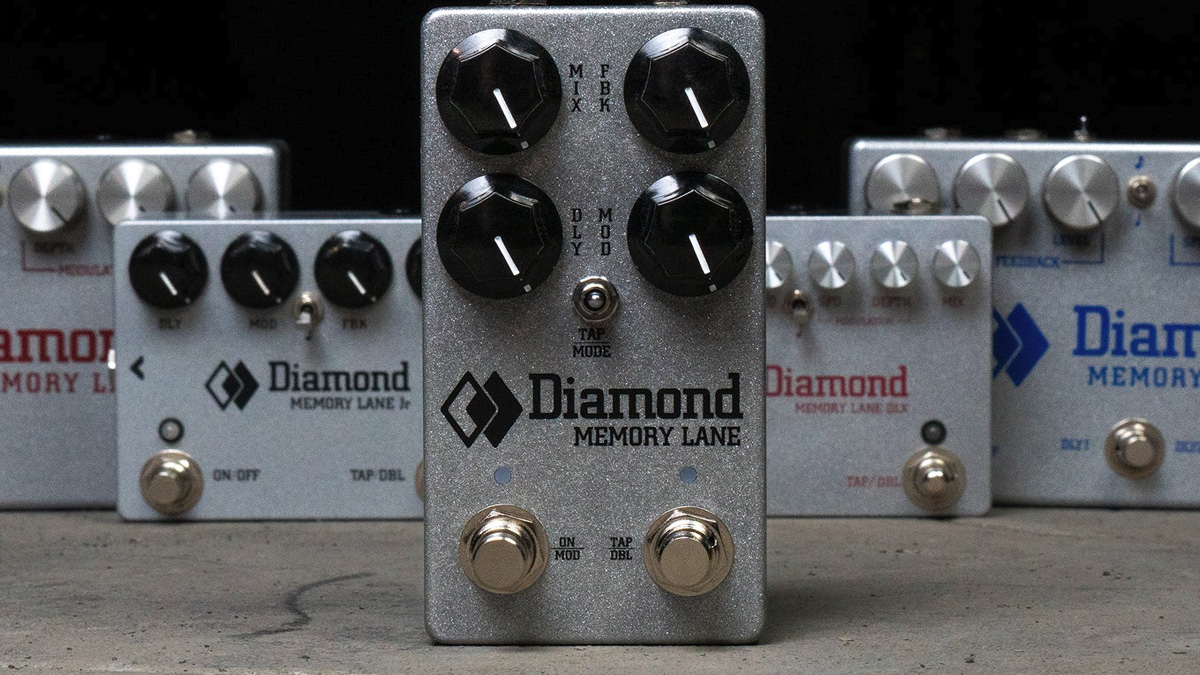
Diamond Pedals call this a dBBD, or digital bucket brigade, delay, and it switches out the need for BBD chips for a system that performs a similar task, and is complemented by a custom companding circuit that adds some compression and softness to help your repeats sit in the mix, and an anti-aliasing circuit, like the original Memory Lane designs, that adds warmth.
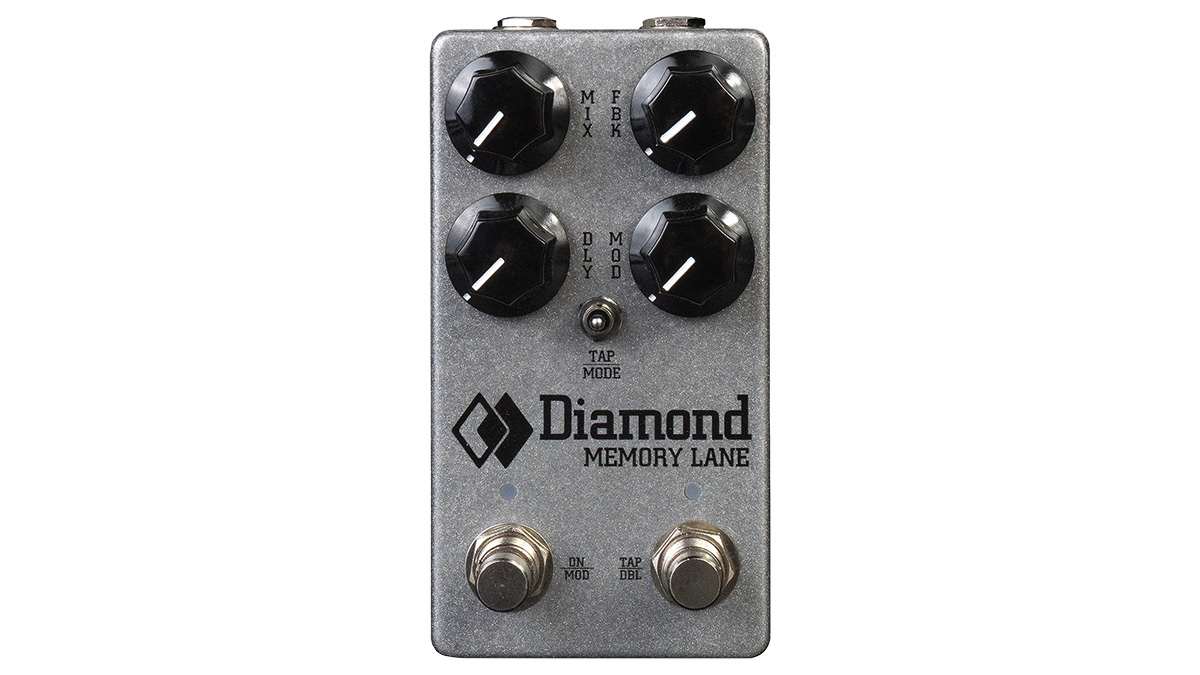
There is a tap-tempo feature activated via Tap/Mode toggle switch and then set by a dual-function Tap/Doubler footswitch that doubles the tempo of the delay while depressed. You can cycle through tap tempo subdivisions by pressing the toggle upwards. Press down and you cycle through Modern, Warm, Vintage, MOD and AutoDiv delay modes, with a Mode LED to let you know which mode is active.
For a compact delay pedal, there is a lot going on. Your controls are Mix for wet/dry mix, Feedback for number of repeats, Modulation for when in the MOD mode, and Delay for setting the delay time manually. Finally, your on/bypass footswitch can activate the modulation mode when depressed, which is a nice performance-friendly feature.
Finally, the Diamond Tremolo, and once again there is more than meets the eye. There are three tremolo modes to choose from, each based around a classic guitar amp-style optical tremolo.
Choose from sine, shark fin and square waveforms. There is also a FET-driven ‘Chopper’ mode that offers a dramatic on/off tremolo – a wee bit the Boss Slicer does – while the Dicer mode allows players to use this super versatile tremolo pedal as a killswitch.
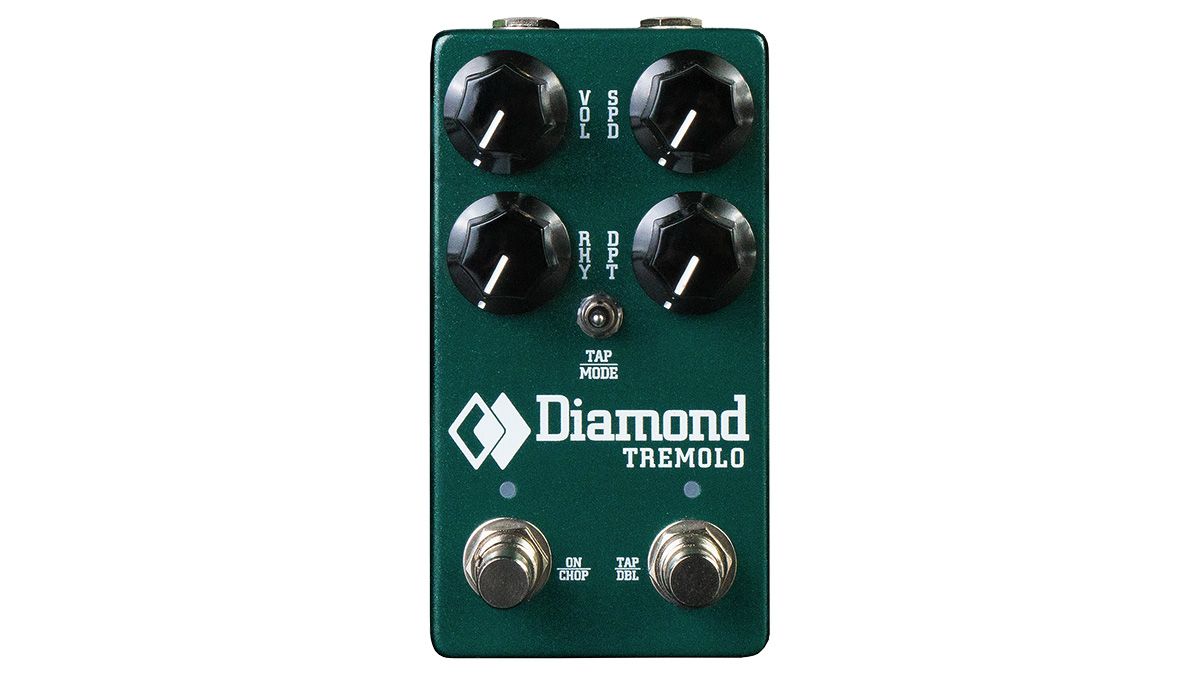
Again, you’ve got a tap tempo footswitch with a Doubler feature, while the bypass footswitch doubles as an Insta-Chop switch when depressed.
The Diamond Tremolo also has an 11-position Rhythm control, and a toggle switch for selecting tap tempo subdivisions and tremolo mode.
These pedals are all made in Canada, with Diamond kitting them out with all-analog Burr-Brown signal paths, and silent switching.
The Memory Lane has a buffered bypass, runs on 9V DC from a pedalboard power supply and is priced $249. The Comp/EQ and Bass Comp/EQ are true bypass, run on 9-18V DC, and are priced $239. You can also run the Diamond Drive at 9V or 18. It is true bypass and is listed at $209. The Tremolo is true bypass, runs on 9V DC and is priced $239.
For more details, head over to Diamond Pedals.
Jonathan Horsley has been writing about guitars since 2005, playing them since 1990, and regularly contributes to publications including Guitar World, MusicRadar and Total Guitar. He uses Jazz III nylon picks, 10s during the week, 9s at the weekend, and shamefully still struggles with rhythm figure one of Van Halen’s Panama.
“Our answer to everything players have asked for and more”: Neural DSP’s Nano Cortex had one major drawback – but now it’s been addressed with a huge free firmware update that takes on Kemper and TONEX
"The ability to use this as a midweight MIDI brain for a gigging setup is what makes it unique.": Walrus Audio Canvas Clock review












